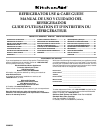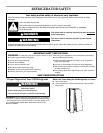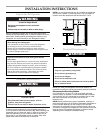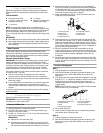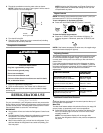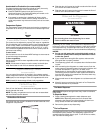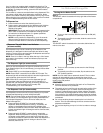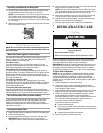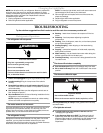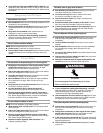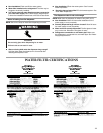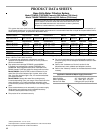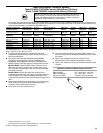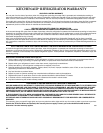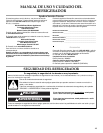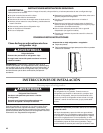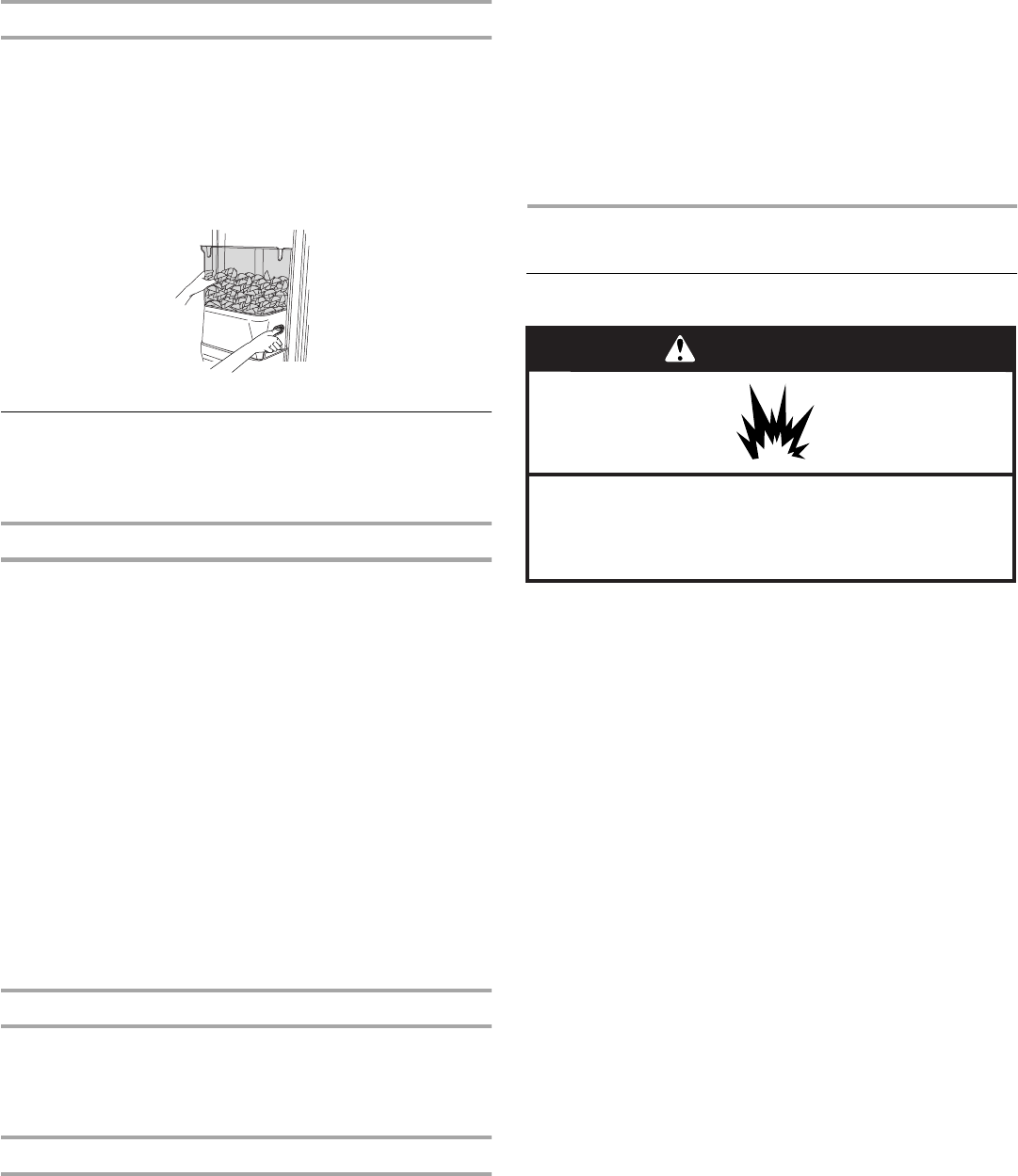
8
Removing and Replacing Ice Storage Bin
1. Hold the base of the storage bin with both hands and press
the release button to lift the storage bin up and out.
NOTE: It is not necessary to turn the ice maker control to the
OFF position when removing the storage bin. The sensor
cover (“flipper door”) on the left wall of the freezer stops the
ice maker from producing ice if the door is open or the storage
bin is removed.
2. Replace the storage bin on the door and push down to make
sure it is securely in place.
Water Filtration System
NOTE: Do not use with water that is microbiologically unsafe
or of unknown quality without adequate disinfection before or
after the system.
Water Filter Status Light (on some models)
The water filter status light and display screen help you know
when to change your water filter. Press the FILTER button to
check the status of your water filter.
If the filter is new:
You must press FILTER to view the filter’s status. For a few
seconds, the status light will be blue and the display screen will
show what percentage of your filter’s life remains.
If it is almost time to change the filter:
The status light will automatically illuminate and will remain on,
appearing yellow. The words “ORDER FILTER” will appear on the
display screen. Press FILTER to see what percentage of your
filter’s life remains. You should order the appropriate replacement
filter. See “Accessories.”
If it is time to change the filter:
The status light will remain on, changing to red. The words
“REPLACE FILTER” and “HOLD BUTTON TO RESET” will appear
on the display screen until the filter has been changed and the
status light has been reset.
To reset the water filter status light:
After changing the filter, reset the status light by pressing and
holding the FILTER button for 3 seconds. The status light will blink
red and change to blue, then turn off when the system is reset.
Non-indicator Water Filter (on some models)
If your refrigerator does not have the status light, you should
change the water filter every 6 months depending upon your
usage. If the water flow to the water dispenser or ice maker
decreases noticeably before 6 months have passed, replace the
water filter more often.
Changing the Water Filter
1. Press the eject button to release the filter from the base grille.
2. Pull the filter straight out.
3. Turn the cap counterclockwise to remove it from the filter.
IMPORTANT: Do not discard the cap. It is part of your
refrigerator. Keep the cap to use with the replacement filter.
4. Align the ridge on the cap with the arrow on the new filter and
turn the cap until it snaps into place.
NOTE: You can run the dispenser without a filter. Your water
will not be filtered. Simply insert the cap all of the way into the
base grille and rotate the cap until it is firmly in place.
5. Remove the protective covers from the O-rings. Be sure the
O-rings are still in place after the covers are removed.
6. Push the filter into the base grille. The eject button will pop
back out when the filter is fully engaged.
7. Flush the water system. See “Water and Ice Dispensers.”
REFRIGERATOR CARE
Cleaning
Both the refrigerator and freezer sections defrost automatically.
However, clean both sections about once a month to prevent
odors from building up. Wipe up spills immediately.
IMPORTANT: Because air circulates between both sections, any
odors formed in one section will transfer to the other. You must
thoroughly clean both sections to eliminate odors. To prevent
odor transfer and drying out of food, wrap or cover foods tightly.
To Clean Your Refrigerator:
NOTE: Do not use abrasive or harsh cleaners such as window
sprays, scouring cleansers, flammable fluids, cleaning waxes,
concentrated detergents, bleaches or cleansers containing
petroleum products on plastic parts, interior and door liners or
gaskets. Do not use paper towels, scouring pads, or other harsh
cleaning tools.
1. Unplug refrigerator or disconnect power.
2. Hand wash, rinse, and dry removable parts and interior
surfaces thoroughly. Use a clean sponge or soft cloth and a
mild detergent in warm water.
3. Wash stainless steel and painted metal exteriors with a clean
sponge or soft cloth and a mild detergent in warm water.
4. There is no need for routine condenser cleaning in normal
home operating environments. If the environment is
particularly greasy or dusty, or there is significant pet traffic in
the home, the condenser should be cleaned every 2 to
3 months to ensure maximum efficiency.
If you need to clean the condenser:
■ Remove the base grille.
■ Use a vacuum cleaner with a soft brush to clean the grille,
the open areas behind the grille and the front surface area
of the condenser.
■ Replace the base grille when finished.
5. Plug in refrigerator or reconnect power.
WARNING
Explosion Hazard
Use nonflammable cleaner.
Failure to do so can result in death, explosion, or fire.



